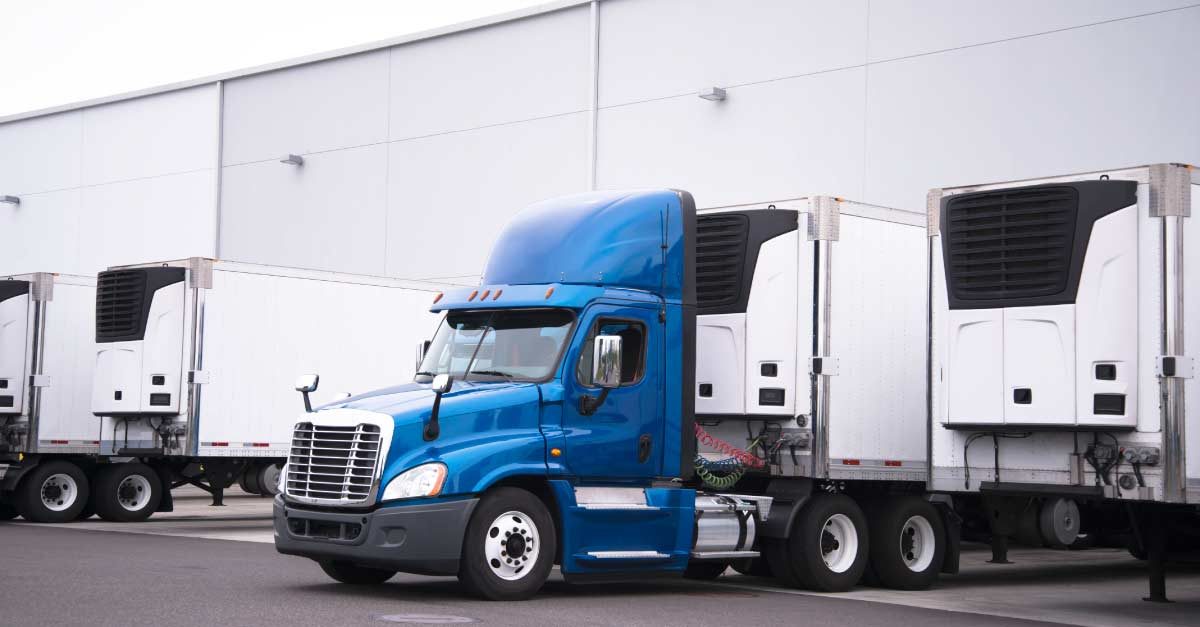By Richard Claar, Martec partner, and Douglas Iredale, Phase Change Solutions senior director
As demand surges for refrigerated goods, food and pharmaceutical cold chains are being further developed to meet customer needs and promote sustainability. See how.
The importance of cold chains within distribution
The supply chain is what enables modern, effective, and efficient distribution for products to travel from supplier to consumer. Within these networks, various specifics are required to ensure quality and preservation among certain goods. Cold chains are the segments of supply chain that deal with refrigerated goods. While almost 90% of cold chain products are food, other perishables like pharmaceuticals recently have illustrated the importance of these channels.
As COVID-19 vaccines are distributed, cold chains are vital to ensure quality and safety among those receiving a dosage. With more and more people depending on these distribution networks, there is a clear need for a more thorough and widespread implementation of cold chains globally. According to pharmaceutical market data, approximately 25% of vaccines globally have degraded efficacy because of an inefficient cold chain, with an estimated 15% of all temperature-sensitive pharmaceuticals being wasted. These allocation issues spread beyond inequitable distribution, and instead highlight the system’s inefficiency in its current networks.
Food cold chains also see their fair share of waste. Losses due to the lack of cold chains globally drive much of this loss. When looking at only the United States, losses are substantially less, though still account for a significant dollar value: ~155B pounds of food worth ~$200B are estimated to have been lost in the US in 2019.
As waste accumulates within inefficient cold chain systems, suppliers and distributors alike are searching for solutions to diminish waste and adopt more efficient processes to conserve energy, save costs, and make a positive impact globally. With the prominence of and potential for cold chains throughout the world, it is vital to continue developing them to better serve their intended customers.
Sustainable cold chains: What are they?
Sustainable cold chains are cold chains that aim to reduce their net carbon emissions and energy consumption levels. Cold chain systems typically use high-GWP (Global Warming Potential) refrigerants, grid electricity from fossil fuels, and off-grid diesel-based transportation. The urgent challenge is to deliver social and economic benefits by expanding cold chain capacity quickly and affordably, while ensuring minimal pollution and adverse environmental effects.
Currently, the climate impact of the global food cold chain accounts for about 1% of global CO2 emissions. High-GWP refrigerants, like hydrofluorocarbon (HFC) refrigerants, are a significant contributor to the carbon footprint of the cold chain. Sustainable cold chains aim to decrease the use of HFCs. Several companies already have begun incorporating solutions to transform their cold chain systems into sustainable cold chain systems.
Phase change materials (PCMs) can significantly reduce cooling load and subsequent carbon emissions. Phase Change Solutions, a global leader in the development of temperature control through PCMs, created a new clean technology that can aid sustainable cold chain development. Its BioPCM® can transition between solid-to-gel and solid-to-solid as it absorbs and releases heat, which is a key differentiator from other PCMs that transition to solid-to-liquid. By lining refrigerated vehicles (like reefer trailers commonly used for moving refrigerated cargo) and retail refrigerators/freezers with BioPCM®, food and pharmaceutical products can maintain optimal temperatures across the entire supply chain.
Other sustainable cold chain solutions lie within the transportation & logistics sector. In 2020, a new railroad route was launched between Spain and the United Kingdom, dedicated solely to the transport of refrigerated goods. This rail route allows more products to travel daily, overall contributing to a more sustainable and efficient process that consumes less energy.
Both solutions are unique examples of carbon insetting, a rhetoric that aims to disrupt the processes that contribute to GHG emissions at their source. As solutions for refrigerated distribution unfold, it also is important to continue advocating for environmental innovation across all markets.
Next stages of sustainable cold chains
Today, the North American cold chain is highly fragmented for both food and pharmaceutical production—with siloed players in logistics, production, storage, and equipment/packaging manufacturing. However, as cold chain demand grows, there is a trend of greater integration between packaging and logistics segments to meet increasingly precise customer needs.
Additionally, widespread adoption of sustainable practices within this sector will require a combination of reform within global environmental policies and individual company practices. Each is a necessary cog to building a reliable and enforceable set of processes for the cold chain market.
Beyond policy, each player within refrigerated distribution should reevaluate their cooling infrastructure and determine how new clean technology may help. Solutions include internal assessments, research & development, infrastructure maintenance, and enhanced/virtual training.
Contact us to discuss your market research needs within sustainable cold chain and transportation & logistics.




